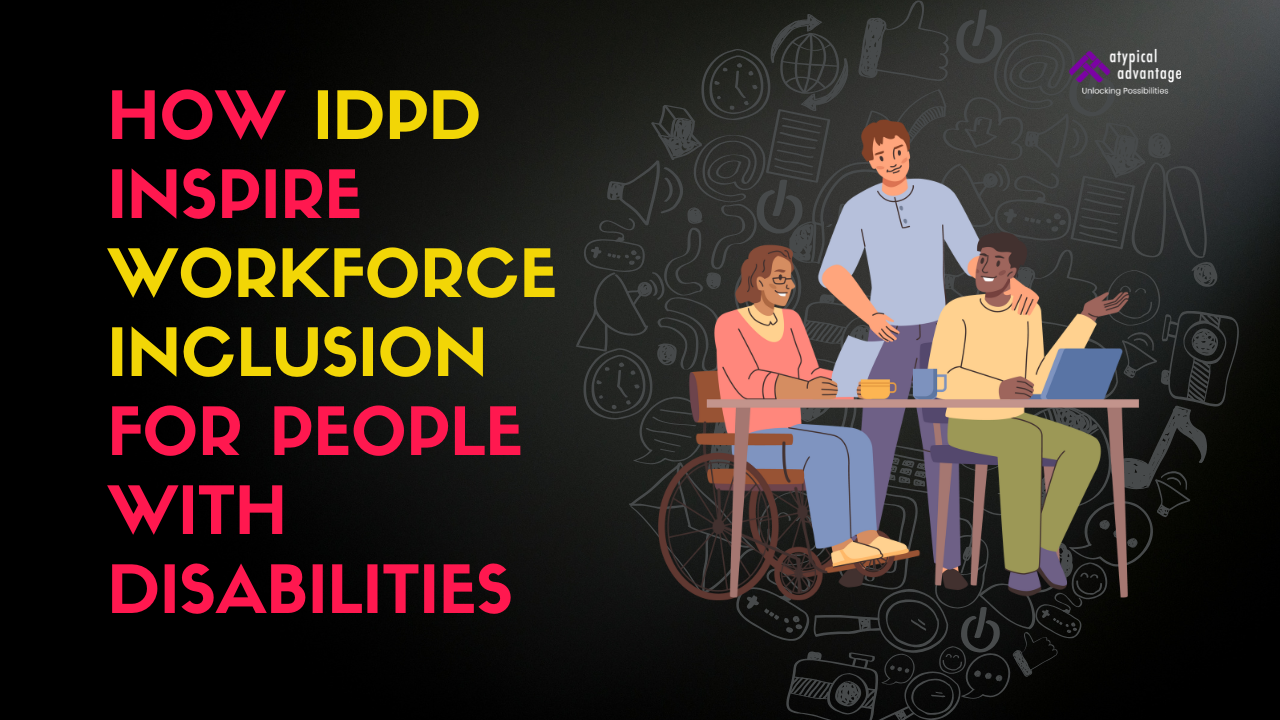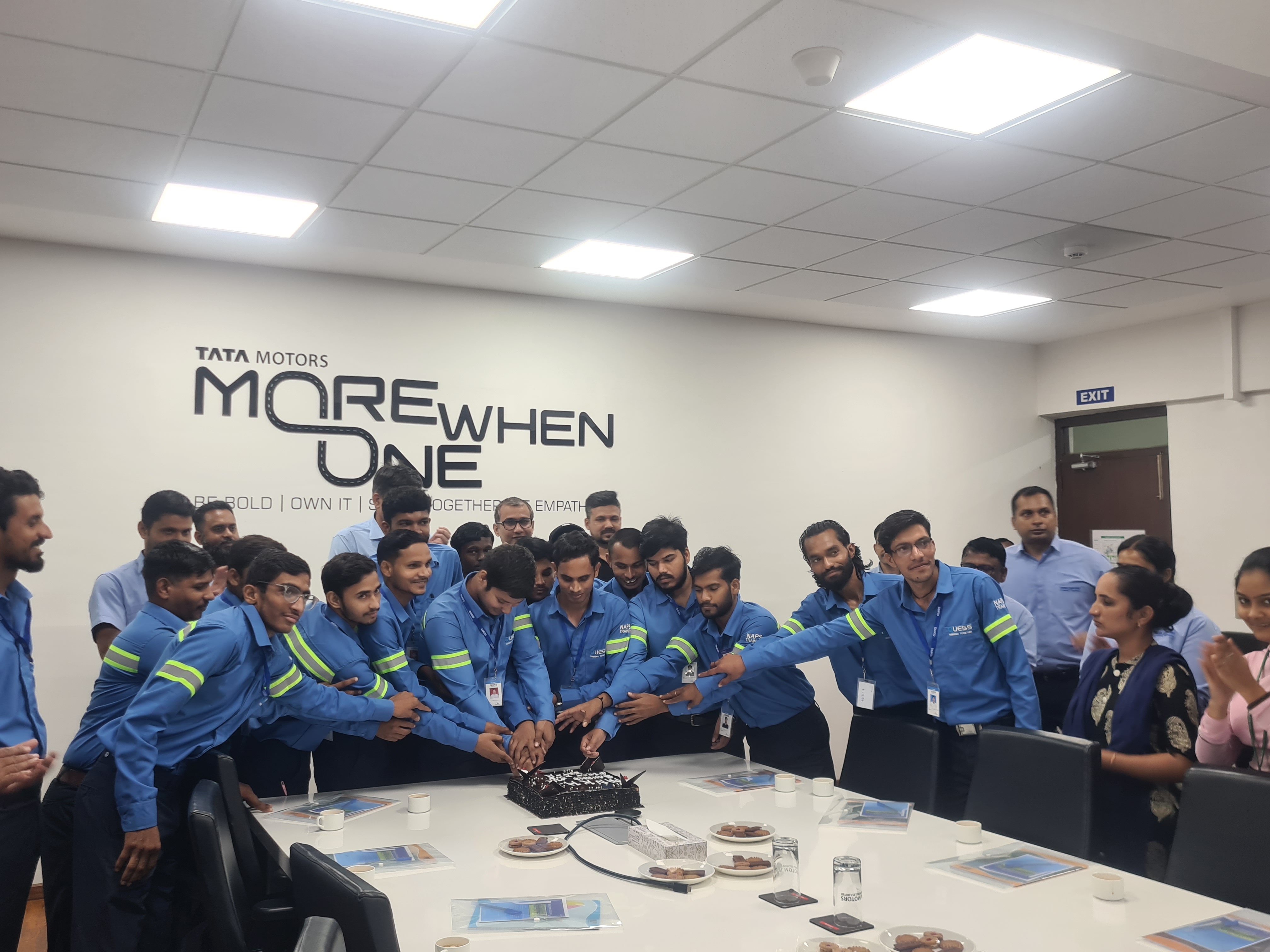How IDPD Inspire Workforce Inclusion for People with Disabilities
Published on: 07 Oct, 2025
How IDPD Inspire Workforce Inclusion for People with Disabilities

International Day of Persons with Disabilities (IDPD) represents more than just the observance day as it is an international effort that inspires workplaces to be inclusive. In order to highlight the issues that people with disabilities face, and celebrate their contributions, IDPD encourages businesses to think again about what they are doing to create environments where everyone has a chance to succeed.
What is Disability Inclusion in the Workplace?
Disability inclusion in the workplace is providing an atmosphere where employees with disabilities are valued, supported, empowered to remove barriers in the physical, social, and systemic levels and to be treated equally. Accessible workplaces ensure better opportunities for recruitment and career advancement. Organisations not only respect ethics and legal compliance but unlock creativity and innovation within themselves by fostering diversity.
Focus Domains in which IDPD Inspires Inclusion of the Workforce
- Inclusive Work Environments
IDPD motivates companies to create work environments that welcome everyone. This involves ramps and elevators, technology, and ergonomic workstations to accommodate employees with different needs.
- Non-discriminatory Hiring
Companies who are inspired by IDPD ensure equal opportunities for candidates with disabilities. They look forward to promoting diversity in the workplace and making hiring inclusive.
- Promotion of Careers in Inclusive Work Environments
IDPD focuses on training programs that will coach and mentor people with disabilities for career advancement.
How International Day of Persons with Disabilities Inspires Workforce Inclusion
1.Inspiring Awareness on Workspace Accessibility
IDPD increases awareness concerning workspace accessibility. The campaigns and events the day presents encourage businesses to audit their infrastructure and get it changed accordingly.
2.Inspiring Policy Change and Legal Protections
IDPD motivates policymakers and organisations to establish regulations that safeguard the rights of employees living with disabilities and provide the same privileges and opportunities.
3.Inspiring Stories of Success: Inclusive Employers
IDPD features stories of organisations that have done better in creating an inclusive working environment, to others, as inspiration to strive and be on the same level.
4.Empowerment through Representation
IDPD highlights the importance of having leaders with disabilities in higher positions, empowering others while breaking stereotypes.
Top Firms Motivated by the International Day of Persons with Disabilities towards Increasing Inclusion
Many big companies have also found inspiration from IDPD to ensure inclusion:
- Google is working towards creating a more inclusive work environment through accessible technologies and equal hiring practices.
- Accenture is a champion of diversity through its programs and partnerships.
- PwC has a policy of training and mentoring employees with disabilities.
Benefits of a Diverse and Inclusive Workplace
- Raises Employees Sense of Satisfaction and Retention
Employees feel attached to the organisation because they are valued and included in the organisation. This leads to increased retention rates.
- Supports Positive Organisational Culture
Inclusion inspires harmony, respect, and empathy in the workplace. Therefore, it creates an environment where everyone will be easy to work with.
- Increases Brand Reputation
Organisations known for being inclusive have higher brand reputation than others. They attract top talent and loyal customers.
What Businesses Can Do To Create Inclusive Workspaces

1.Inclusive Facilities in the Workplace
Install ramps, accessible bathrooms, and adaptive technologies to ensure physical inclusivity.
2.Inclusive Hiring Practices
Recruitment strategies that focus on skills and abilities rather than disabilities, basically reduce any possibilities of biases.
3.Training and Education
Workshop activities to educate people on disability inclusion and how to support colleagues.
4.Partnership with Organizations Representing Disability
Partner with organisations that advance disability issues to enable better policy and best practice developments.
How Atypical Advantage Enables Inclusive Workspaces for Corporates and Offices
Atypical Advantage acts as a bridge between organisations and employees with disabilities. By providing resources and consultancy, it helps businesses identify barriers and implement solutions to create truly inclusive environments. Be it through the accessibility audit or customised training sessions, Atypical advantage is building a ground for corporates to embrace diversity .
Atypical Advantage is India’s largest livelihood platform for Persons with Disabilities(PWD). Whether it is a singer looking for a show, a visual artist looking to sell their paintings, or job seekers with disabilities looking for career opportunities, it bridges the supply & demand side inefficiencies so that Persons with Disabilities can earn a dignified income. We have a large pool of 40,000+ talents with disabilities and have worked with 450+ corporates within a short span of 4 years. We were also featured on Shark Tank Season 2 and were declared the winner of the prestigious the National Startup Award for Social Impact, and the National Award for Best Organization empowering persons with disabilities in 2024, conferred by the Union Government.
Frequently Asked Questions
Q1. What is the importance of IDPD in workforce inclusion?
IDPD raises awareness and inspires organisations in the adoption of inclusive practices and policies for people with disabilities.
Q2. What can companies do to make the workspace accessible?
Companies need to have ramps, adaptive technologies, and ergonomic workspaces to ensure that everyone has a functional place.
Q3. What are a few examples of the hiring process regarding people with disabilities?
Recruiting is achieved through inclusive hiring practices that include equal access for candidates with disabilities, the provision of accessible recruitment practices, and applying skills and abilities in interviewing.